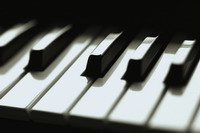Piano Sheets > Daniel Moore Sheet Music > Shambala (ver. 1) Piano Sheet
Shambala (ver. 1) by Daniel Moore - Piano Sheets and Free Sheet Music

About the Song
"Shambala" is a song written by songwriter Daniel Moore. In 1973, versions by two different artists appeared in the Billboard Hot 100.
The first version of "Shambala" was recorded by Texan singer-songwriter B. W. Stevenson. The single of this version hit the Billboard charts on May 12, 1973 and peaked at number 66 during its eight-week run.[1][2][3] This lesser-known version is often regarded as country pop or country rock and appears on collections of such. The twang of Stevenson's steel-string acoustic guitar, his Southern accent and a sort of folk music hand clapping all distinguish it from the better-known version soon to follow.[4]
There is no "hand-clapping" in the standard release of "Shambala" (as it appears in the CD "The Very Best of B. W. Stevenson"). There is a sound on the rhythm track that might be confused with hand-clapping (if not listened to very closely) that sounds like.
Download this sheet!
About the Artist

Random article
Piano notes and music reading No language is easy to learn except for our mother tongue. Mother tongue is a language which we start learning as soon as we are conceived. But learning some other language can be difficult if you are really not into it. Piano Notes are written in a completely different language. Agreed that the characters in the piano notes are very artistic and beautiful but they are equally strange to beginners and newcomers. But here is one interesting fact. Learning music reading from a piano notes music sheet is not a very difficult task. Actually it is much easier than learning a foreign Asian language like Chinese. Memorization and repetition are the two main ingredients for success in mastering the language of piano notes. So realistically speaking, once you are done reading the basics, all you have to do is practice the language as much as you can. To say in a very classical tone, practice till each and every note starts running through your veins. (More...)
